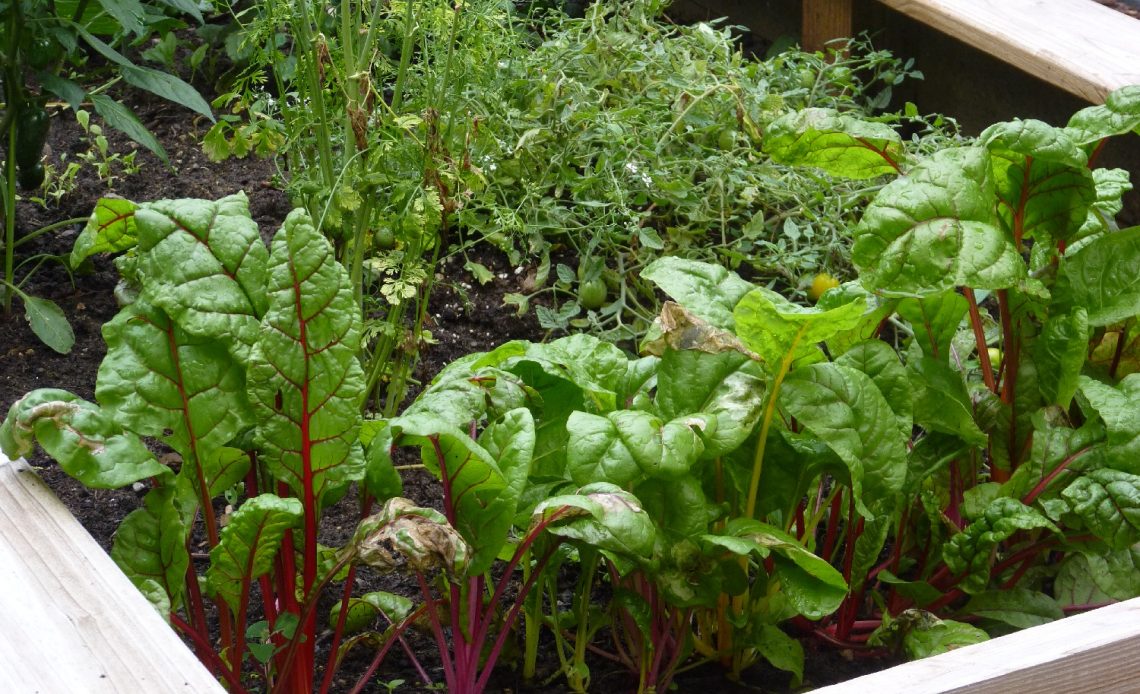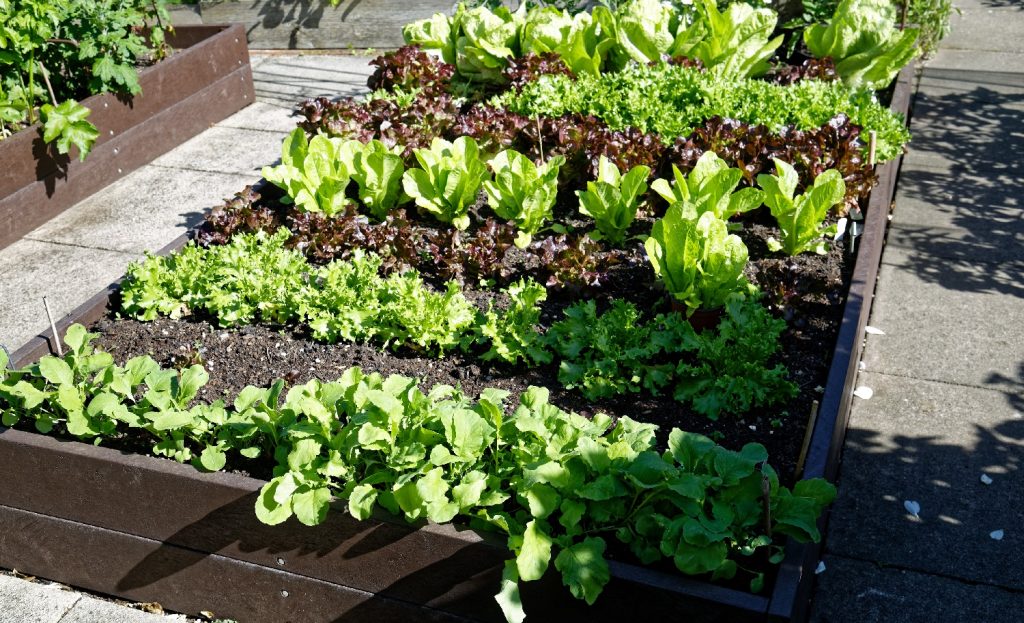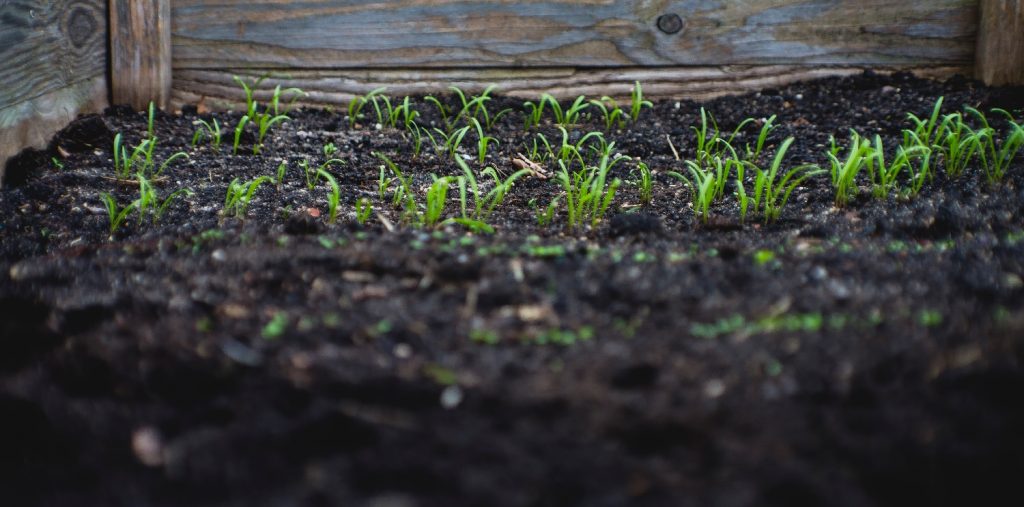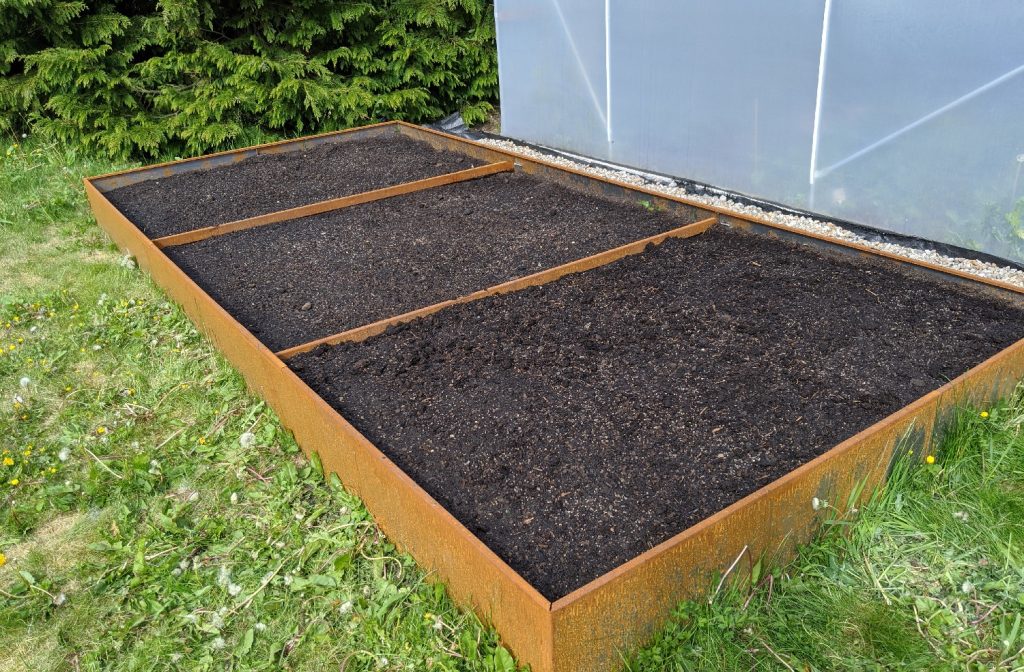

We’re here to help! Wild Yards is a completely free website that is 100% dedicated to helping you create a wildlife-friendly, sustainable yard. Read more
WildYards is reader-supported. When you buy a product through a link on our site, we may earn a comission. Every product is independently selected by our (obsessive) editors and our reviews are unbiased and objective. Read more about our mission or our privacy policy.
A good vegetable garden starts with good soil, and container gardening in raised beds makes creating ideal soil conditions for your vegetables much simpler. But different plants have different needs. For instance, tomato plants prefer fertile, loamy soils, while beans grow best in sandy, nutrient-poor soils. Both plants must have their soil needs fulfilled in order to grow well. But what’s the best soil mixture for raised vegetable gardens that will support growth across the spectrum?
The best soil mixture for raised vegetable gardens contains 50% topsoil, 30% compost, and 20% organic matter. This basic soil recipe creates a neutral pH that suits a variety of vegetable plants. Once your raised beds have been filled with this all-purpose soil, rows can be amended separately to suit the specific needs of your vegetable plants.
Why is it better to grow vegetables in raised beds rather than in the ground?
Not all backyards are equipped with perfect soil. Some soils are too nutrient-poor to support a vegetable garden, while others retain too much water or contain high amounts of clay. You may be able to find one or two plants that will grow in your region’s soil. But unless you have neutral, loamy, well-drained, moderately fertile soil, it can be tough getting all of the plants in your vegetable patch to grow well.
Raised garden beds make controlling the soil conditions of your garden much easier. Because you know exactly what’s in it, you have a better understanding of its pH, nutrient density, moisture retention capacity, and draining capabilities. Raised gardening allows you to become more acquainted with the soil, which benefits you as a gardener.
Growing your vegetables in raised beds has a few other benefits as well. They’re easier on your joints because you don’t have to bend down as much, sparing your knees and back from chronic pain; they require less water than in-ground vegetable gardens; and because they’re filled with fresh soil, raised beds don’t have as many weeds as vegetable patches that are grown straight in the ground.
Overall, raised vegetable beds save you time and labor, so gardening can be an enjoyable hobby for you, rather than an annoying chore. When maintained properly, raised beds can provide you with an abundance of produce all season long.

The 3 key elements of a good soil mixture
There is no one perfect soil mixture that every plant in the world will thrive in. However, there is a standard raised bed mix that will provide the vegetables in your garden with an excellent starting point. This general-purpose soil recipe calls for three main ingredients:
Topsoil
Topsoil is exactly as its name suggests — the uppermost layer of soil that most plants grow in. While topsoil varies by region, this soil is generally loose and loamy, so it holds onto some moisture while allowing excess water to escape. Topsoil usually has a neutral pH with low to moderate nutrient content. It’s the perfect “base” for your other soil ingredients.
While you can purchase topsoil in bags from hardware and feed stores, this gets costly quickly. Shop around first. Most bulk soil distributors offer clean organic topsoil that’s free of debris. Just be sure to avoid purchasing topsoil excavated from construction sites, as it’s usually full of rocks and sticks that hinder root development.
Compost
Compost is a mixture of biodegradable organic materials that provides plants with a natural source of vitamins and minerals. Compost is comprised of nitrogen-rich green matter, carbon-rich brown matter, oxygen, and water. Common compost ingredients include leaves, flower heads, plant clippings, shredded paper, coffee grounds, overripe fruits, and vegetable peels.
You can make your own compost in a 5-gallon bucket. But if you have large vegetable garden beds, you’ll need much more compost than a 5-gallon bucket can provide. Prepackaged compost can be found at nurseries and garden supply stores. Because you don’t need as much compost as you do topsoil, it’s not too expensive to purchase this way.
Organic Matter
Even though compost is organic matter, these are two separate terms when discussing soil recipes. Organic matter contains acids that break vitamins and minerals down so they’re easier for plants to absorb. Manure, vermiculture, perlite, coconut coir, and peat moss are some of the most common types of organic matter.
Organic matter helps feed the good bacteria in the soil, which benefits the entire ecosystem — or, in this case, raised garden bed. The enzymatic activity of organic matter improves nutrient availability in the soil, resulting in healthier plants that produce more fruit and are more resistant to pests and diseases.

General-purpose soil mixture for raised vegetable garden beds
Once you’ve gathered all of your ingredients, you’re ready to get started. Begin by filling your raised beds with roughly 50% topsoil, 30% compost, and 20% organic matter. Then, using work gloves and a hand trowel or shovel, combine the soil mixture until it achieves a uniform texture and appearance.
Be careful not to overfill your raised garden beds with soil. Beds should be 80% to 90% full. You don’t want the soil to be level with the walls of the raised beds because water will run off and soil will spill out over time. So make sure you’ve got a 4 to 8-inch space between the top of the raised bed and the soil.
While it’s important to stick as closely to the recipe’s percentages as possible, this isn’t a fine science. It’s okay if you have a bit more compost than recommended, or a touch less topsoil. This is a general-purpose soil mix that has a little wiggle room for error. You can always amend the soil later as you observe how your vegetables grow.
Which amendments can be added to this soil mixture for raised vegetable garden beds?
With your soil mixture in your raised vegetable beds, you’re ready to start planting. This mixture provides plants with a neutral, well-draining, semi-nutrient-dense soil that will help them start off on the right foot. But as you observe your plants, you may notice less than ideal growth. Here are a few common amendments to help you adjust this soil recipe to suit the needs of your vegetable plants.
Bone Meal
If you notice the vegetables in your garden are developing purple stems, they’re probably suffering from phosphorus deficiency. Bone meal is an excellent source of phosphorus, and it’s easy for plants to absorb, rebuilding their phosphorous levels quickly. Bone meal also contains high amounts of calcium which is particularly beneficial for pepper, zucchini, and tomato plants.
Blood Meal
It’s not uncommon for garden vegetables to develop yellow foliage. This is a hallmark sign of nitrogen deficiency that often gets overlooked. Fortunately, there’s an easy fix. Blood meal rapidly restores yellowing leaves to their proper color. Basil, Brussels sprouts, rhubarb, Swiss chard, and other leafy green vegetables benefit from blood meal applications. Interestingly, blood meal also helps to repel garden pests like rabbits and deer. As prey animals, these foragers avoid the smell of blood because they associate it with would-be predators.

Rock Dust
Because our soil mixture for raised vegetable gardens contains compost and other organic matter, it’s a good source of nutrients. But over time, as you harvest your fruits and vegetables, trace amounts of vitamins and minerals are removed from the beds. It’s important to replenish those minerals with more compost and organic matter. A bit of rock dust can help, too.
Rock dust contains trace minerals, like copper, zinc, cobalt, manganese, and boron that support healthy plants. Many backyard gardeners observe a dramatic increase in crop production with rock dust. Grapes, especially, love the nutrient boost it provides.
Gravel
If for whatever reason the soil in your raised garden beds isn’t draining well enough, you can always add a bit of gravel. This loosens the soil making it more porous so water can drain quickly. Mediterranean herbs, like lavender, rosemary, oregano, and thyme benefit from gravel, so add a handful to the bottom of the hole to improve drainage before planting them.
Sawdust
If your garden isn’t having a drainage problem, but rather a water retention problem, sawdust can help. Sawdust makes a wonderful natural mulch because it packs together when wet, holding moisture in the soil, and it’s natural, so it won’t release dangerous chemicals into the soil. Wood chips make a great insulator, keeping plants warm during the fall and winter months. Consider applying a layer of sawdust to your raised beds in early spring to keep seeds warm as they germinate.
Is this soil mixture for raised vegetable gardens suitable for all plants?
Yes! This fantastic general-purpose recipe is an excellent starting point for all kinds of fruits, vegetables, and herbs. You can even use it in landscaping to grow shrubs, flowers, and other ornamental plants. While you may have to make a few modifications with the help of some all-natural fertilizers, this soil will give the vegetables in your garden everything they need to start off right.
